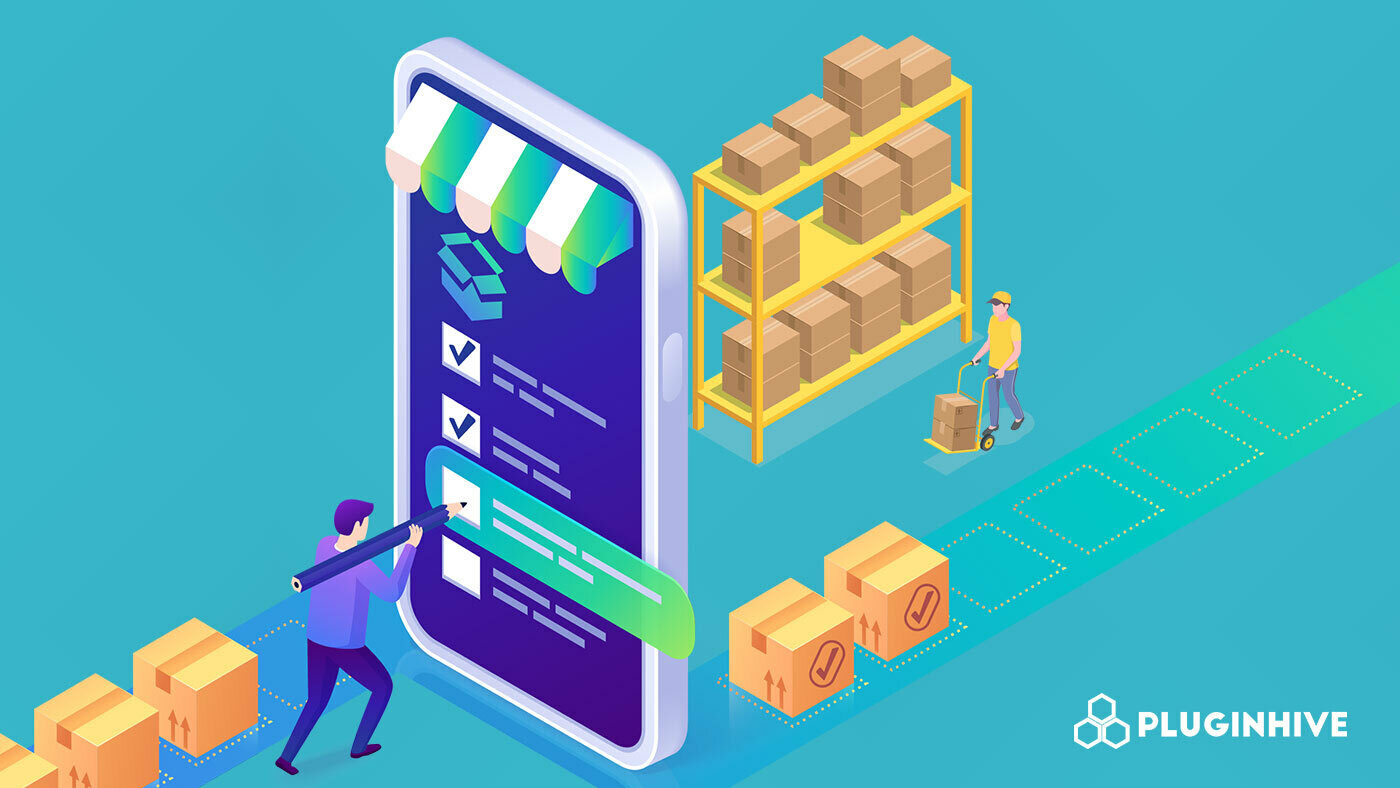The supply chain is a crucial part of every business’s operational function that has a long-term impact on profitability. This includes managing business inventory like raw materials, end products, work in progress, and Maintenance, Repair, and Operations (MRO) supplies. Effective control of the flow of these products in and out of your business comes with myriad benefits.
For instance, you can reduce operational costs as you eliminate unnecessary spending on commodities not required. This increases the available cash flow in your business, and you can channel the free capital into other income-generating activities. Also, as a business owner, you’d want an inventory system that provides room for growth in the future. In that case, below are five ways to create a Shopify scalable inventory management system along with the best apps for Inventory Management.
On this page
Shopify Inventory Management Tips
Top 5 Apps for Shopify Inventory Management
Shopify Inventory Management Tips
- Invest in the right inventory management software
- Use data analytics to make sale projections
- Set par levels
- Have a contingency plan
Invest in the right inventory management software
With the advent of technology, gone are the days of using laborious and time-consuming traditional inventory management methods. As an entrepreneur, you can now rely on inventory management software to track your business inventory at all phases. According to market statistics, it was estimated that businesses using an inventory management system improve inventory efficiency by approximately 30% and experience increased productivity by about 25%.
Particularly, Shopify inventory management allows in-depth monitoring of the current products in your e-commerce store. It provides real-time metrics on the inventory amounts conducive for continuous operations or when to take advantage of increased demand. However, note that some inventory programs can come with excessive capabilities or features that your business may not need. Therefore, to avoid paying extra, you may want to invest in software compatible with your current needs so you can upgrade its functionality as you expand.
Here are some more benefits of using inventory management software
- It optimizes operations, preventing human approaches’ miscounts or data entry errors.
- It provides a central database to keep all your records, budget for inventory, and generate data-informed reports.
- It eliminates the need to hire staff to perform repetitive tasks.
- You can easily detect external threats such as theft and take the necessary precautions to prevent losses.
- Other packages integrate purchase management elements allowing you to connect with your vendors and initiate and complete your inventory orders.
- Facilitates management of multiple sales through instant processing and fulfillment of orders.
Overall, an automated inventory system ensures seamless stock management and fulfillment of customer demands. This way, your business remains competitive in the fast-paced market full of established providers.
Use data analytics to make sale projections
Sale projections can help determine how quickly you can sell the current stock and when you’ll require the next batch. For that reason, investing in an inventory management system that incorporates real-time data analytics for instant sales forecasting is best. With these market insights, you can scale your stock levels up or down at the appropriate time and prevent overstocking or understocking.
For instance, you can analyze your historical sales to gauge future customer behavior. If you’ve been moving around 1,000 items each month, you’ll likely require approximately 1,000 products monthly.
Also, you’d want to keep an eye on other factors influencing consumer demand. That includes:
- Seasonality: During the peak seasons, like the Christmas festivities or other important holidays, consumers tend to buy more to fund their celebrations.
- Economic crisis: For instance, during the pandemic, there was a high decline in purchasing goods and services due to demanding living conditions.
Therefore, to do this, ensure your analytic approaches provide a broader view of the whole industry for detailed information and accurate predictions. It should allow you to assess the patterns throughout the year to determine market changes and the inventory adjustments required to satisfy your customer’s needs.

Set par levels
Inventory par, also known as safety stock, is the minimum amount of inventory you should have on hand regularly. When the inventory levels are below the predetermined par level, it’s the right time to order more to ensure consistency. Nevertheless, some entrepreneurs tend to maintain too much inventory due to the fear of being caught short of stock. This comes with high risks as it’s susceptible to damage or depreciation, resulting in losses. Others are forced to sell the products at a throw-away price or ship them overseas to minimize wastage. Also, extra inventory requires storage, so you may incur high warehousing costs to manage the bulk.
Therefore, as an entrepreneur, setting appropriate par levels ensures your source and keeps what you only require. Integrating this tactic into your inventory management system is vital, especially for perishable items that can go bad within short periods. For small businesses or startups still looking to grow their customer base, it’s best to maintain low safety stock levels that make sense in the meantime. You can adjust them as you evolve and attract more buyers.
Also, note that the par levels set might vary per product because there are fast and slow-moving products. For that reason, always keep an eye on the fastest-selling items for reordering to prevent shortages and ensure optimum customer satisfaction.
Have a contingency plan
As your business expands, you might face many inventory management risks that can negatively hurt your venture. To prevent this, it’s best to determine your potential risks and develop efficient strategies to mitigate them. Some of the risks include:
- Disruptions in the transportation of raw materials due to natural calamities
- An unanticipated discontinued supply of products by your vendor
- Miscounts on the amounts of inventory available
- Inadequate warehouse space for storage
- Cash flow shortfall to cater for reorders
These issues may arise anytime during the business, and you’d not want to be caught unprepared. Therefore, you may want to create an inventory system that provides solutions to potential problems. For instance, it should offer alternative ways to manage any defective or unwanted goods returned by consumers or foster strategic partnerships with your suppliers.
Top 5 Shopify Inventory Management Apps
- Sellbrite
- ShipHero
- Skubana
- Pipe17
- Stock Sync
Sellbrite
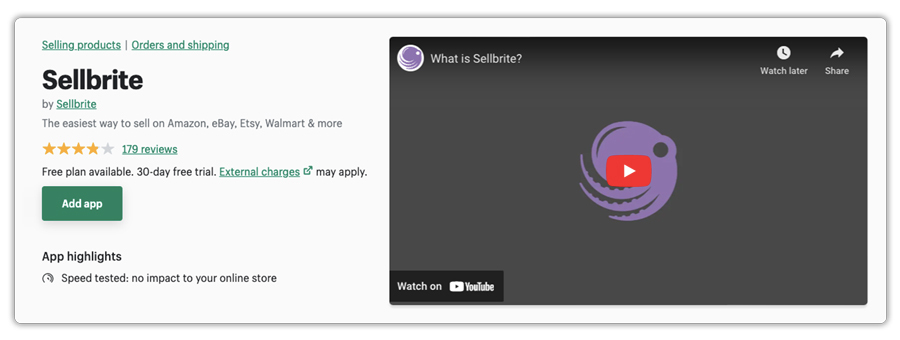
Sellbrite enables brands & retailers to list and sell products effortlessly on the world’s largest online marketplaces and gain centralized control over inventory and orders.
Sellbrite’s simple, intuitive interface provides powerful tools and automation to simplify listing your products. The app gives a comprehensive overview of daily sales and automatically adjusts and synchronizes inventory information to prevent the over-selling of products.
Key Features
- Automatic inventory syncing
- Supports multiple warehouse locations
- Easy-to-use platform
- Centralized fulfillment interface to manage and fulfill all orders
Price
Free for up to 30 orders per month. Paid plan starts at $19 for 100 orders
ShipHero
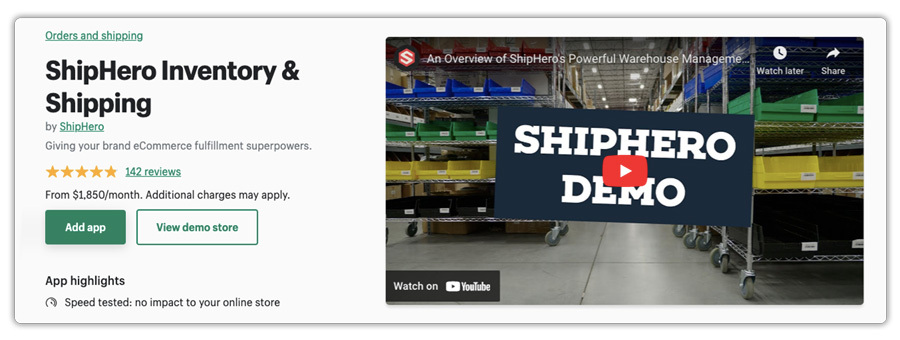
ShipHero has been designed to help eCommerce brands run their warehouses using the best processes and technology.
It allows merchants to sync inventory across all sales channels and implement automated rules to reduce manual tasks. Batch order processing, barcode support, purchase order management, returns management and advanced reporting are all features included in the ShipHero app.
Key Features
- Easy integration to your store
- Better & quick client support
- Lesser transportation cost
- Real-time tracking for inventory & orders
Price
Starts from $1,850 per month
Skubana

Skubana brings everything that is needed to track your company’s performance in a single place. One can easily analyze all important stats: low-stock levels, incoming stock, and fulfillment performance metrics.
It also enables to import of products from the warehouse and reduces the struggle of inventory management. Skubana also develops reports showcasing gross margins, unit margins, and other useful details.
Key Features
- Single-click warehouse importing
- Excellent analytics characteristics with comprehensive reports
- Prompt customer support services
- Accurate insights and statistics on the most demanded products
Price
Start at $1000 per month
Pipe17
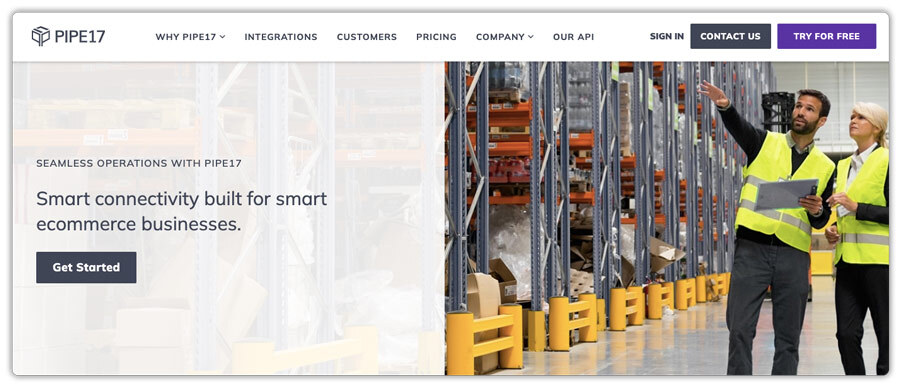
Pipe17 is an eCommerce integrator that connects the front-end and back-end features. It gives more control and visibility over the entire fulfillment cycle, vendor services, and order and inventory flow.
It seamlessly integrates with Shopify and gives an accurate view of your inventory across your locations, reliability, super fast sync rates, secure end-to-end encryption, and infinite scalability.
Key Features
- Smart connections between sales channels and fulfillment solutions
- Multi-channel selling
- Automated inventory management, and order notifications
Price
Start at $150 per month
Stock Sync
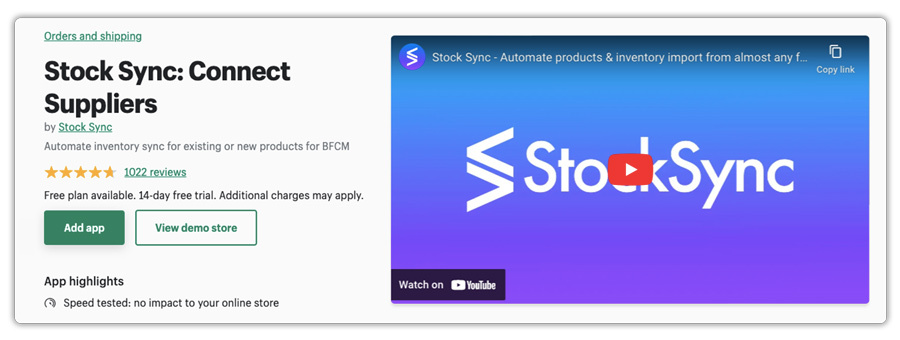
Stock Sync helps to automatically update inventory data with SKU information, allows to manage the price of your products, export inventory, synchronize detailed information, and so on. This application also supports a large number of scheduled inventory updates.
Key Features
- Email, Rest API, FTP, and many other integrations
- Automatic inventory scheduling
- Export inventory, and sync to vendor websites
- Great shipping functions
Price
Free plan available. Paid plan starts at $5 per month
Conclusion
All businesses managing any form of inventory require an efficient inventory system that they can scale with. Therefore, consider choosing the right Shipping Solution to automate inventory management, using inventory data analytics for predictions, setting optimal par levels, and preparing a contingency plan. Remember, a well-stocked business translates to value to the consumers, and provides a good reputation, and a competitive edge. All these sets you up for success in the long run.

